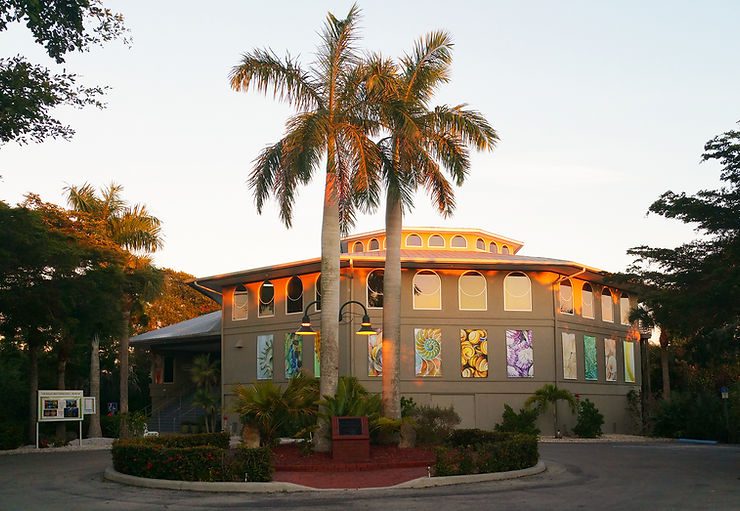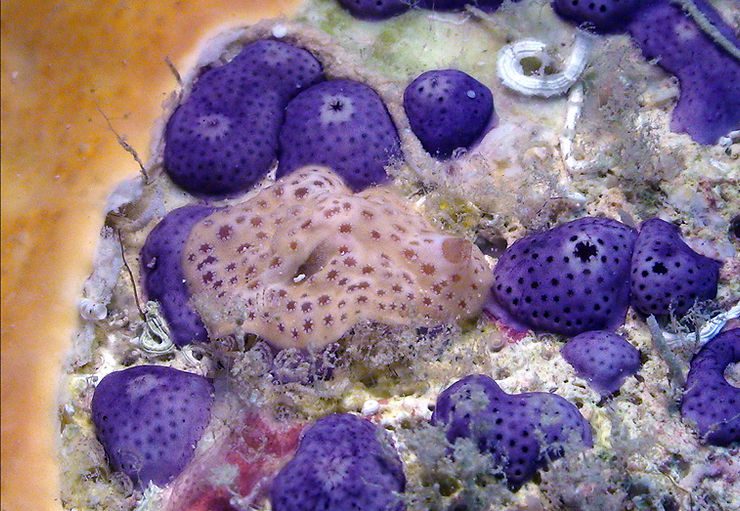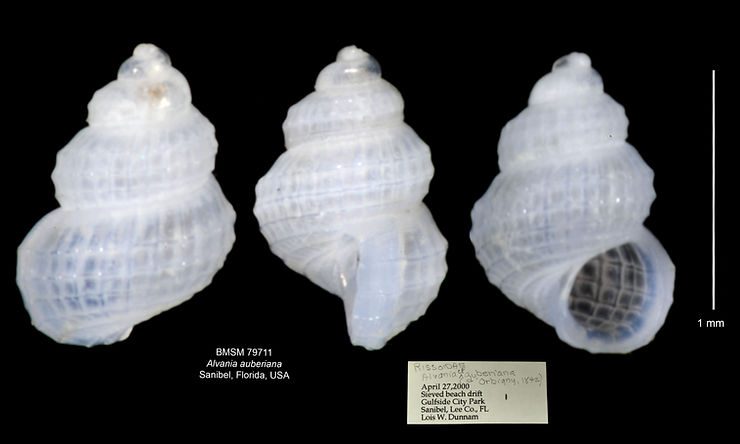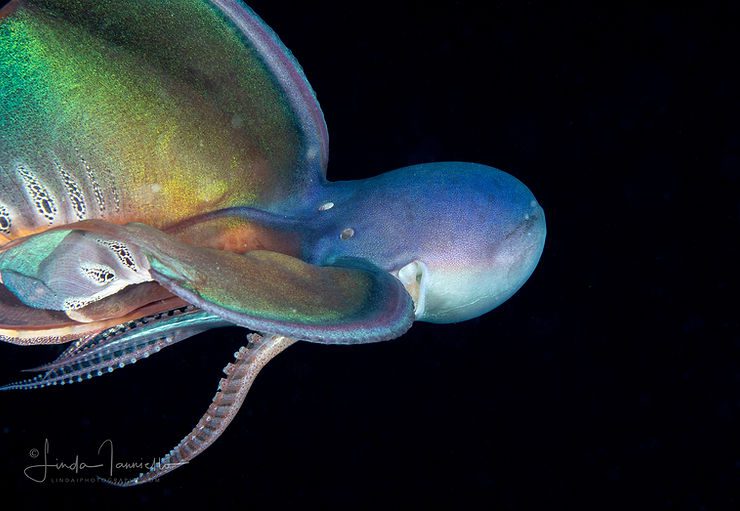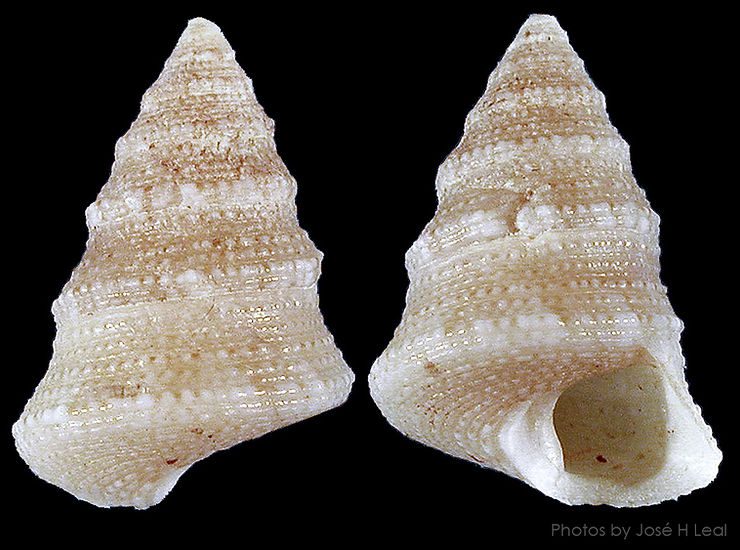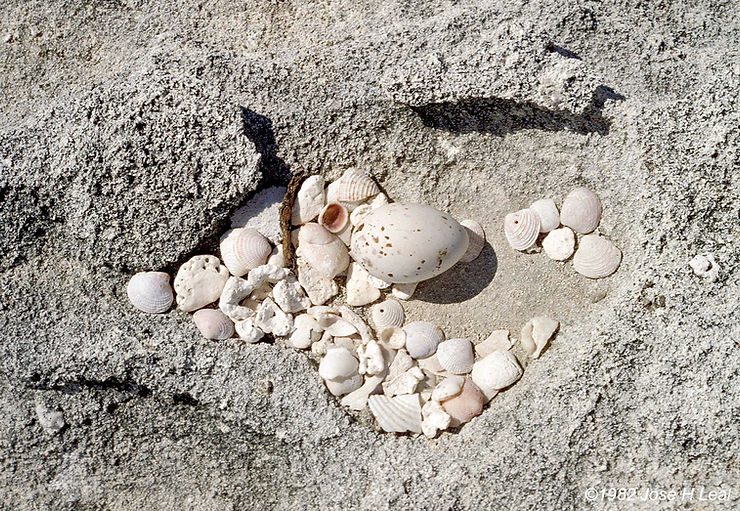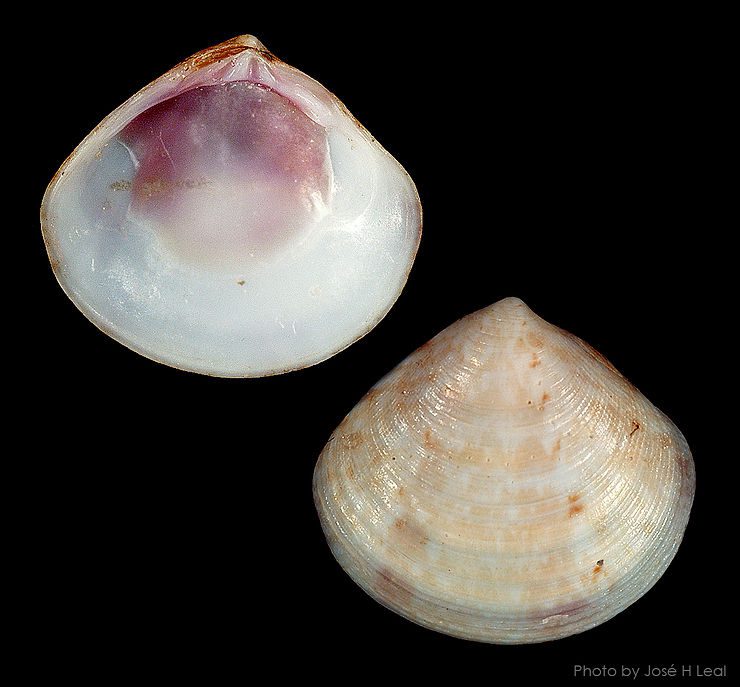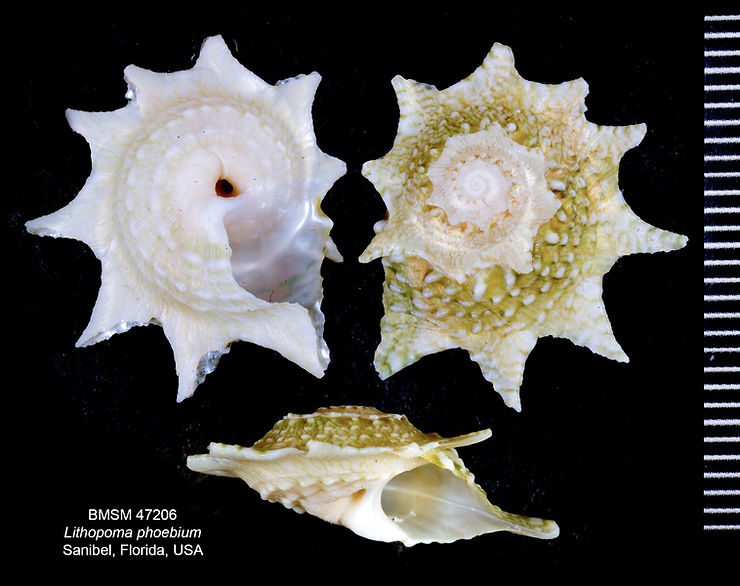
Shell of the Week: The Longspine Star Snail
Lithopoma phoebium (Röding, 1798) measures up to 70 mm, and has a turbinate shell that is usually wider than taller, with about 12–17 triangular spines on the shell periphery. These spines may be worn or reduced in size in some specimens. The shell base is flat, with wavy threads crossed by a few raised spiral cords. The color is variable, with light-brown and greenish hues present, and a whitish base. Although the species is common in other parts of the Gulf of Mexico and Caribbean region, it i
